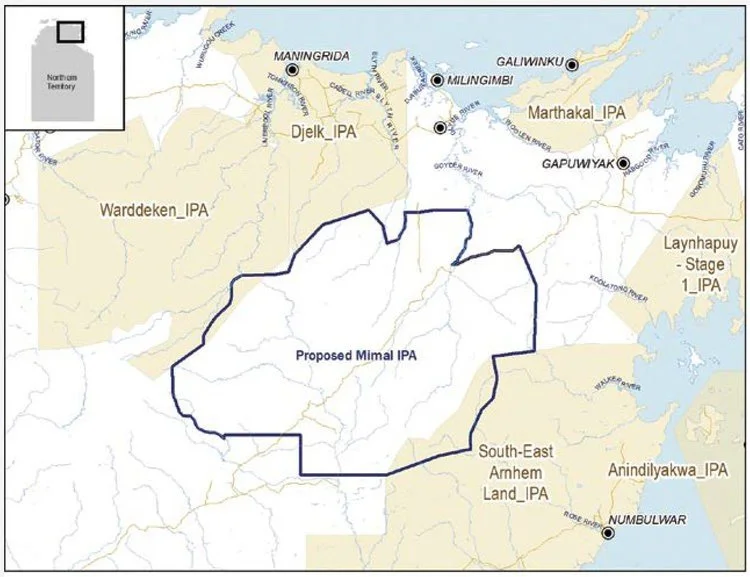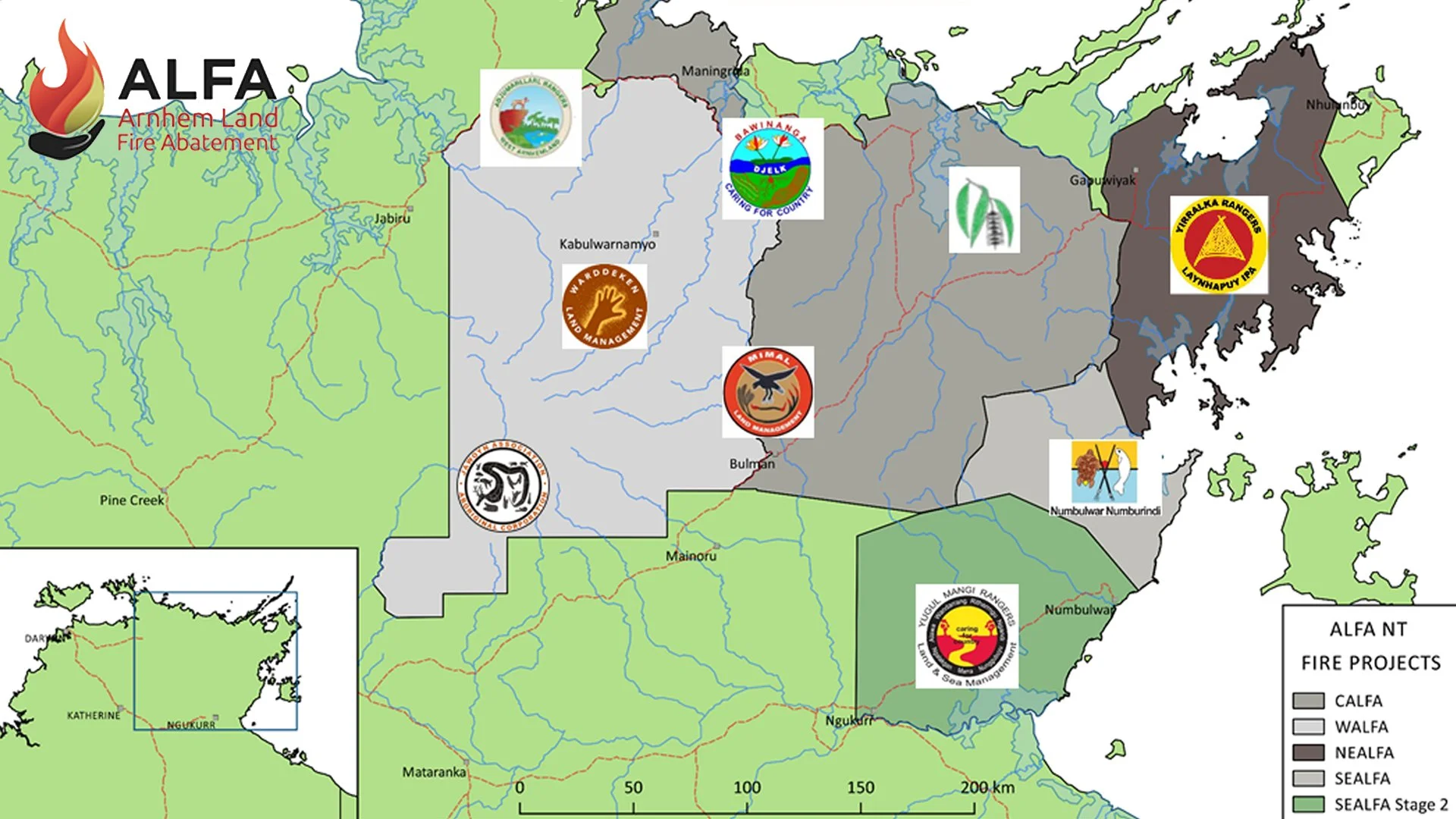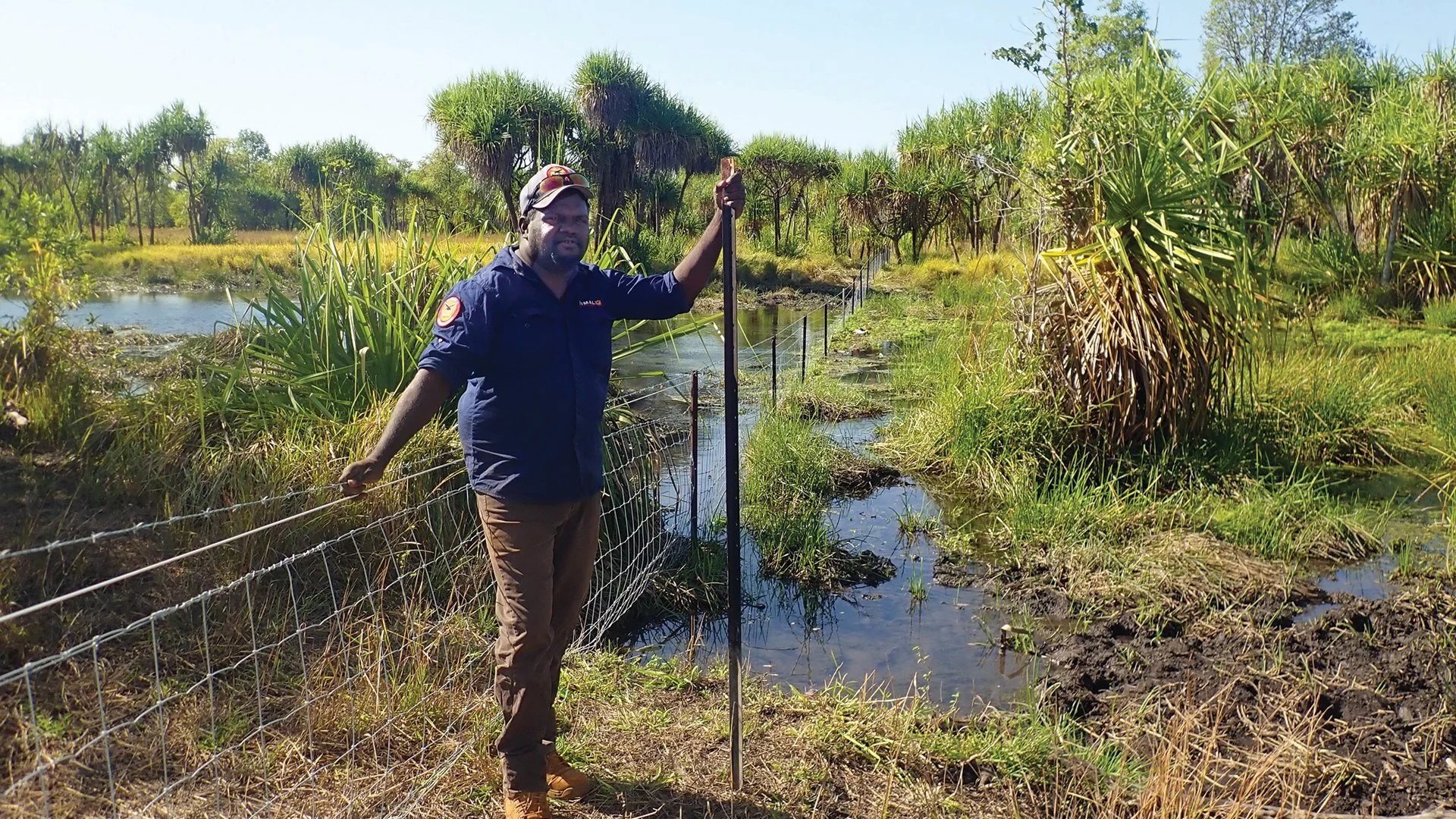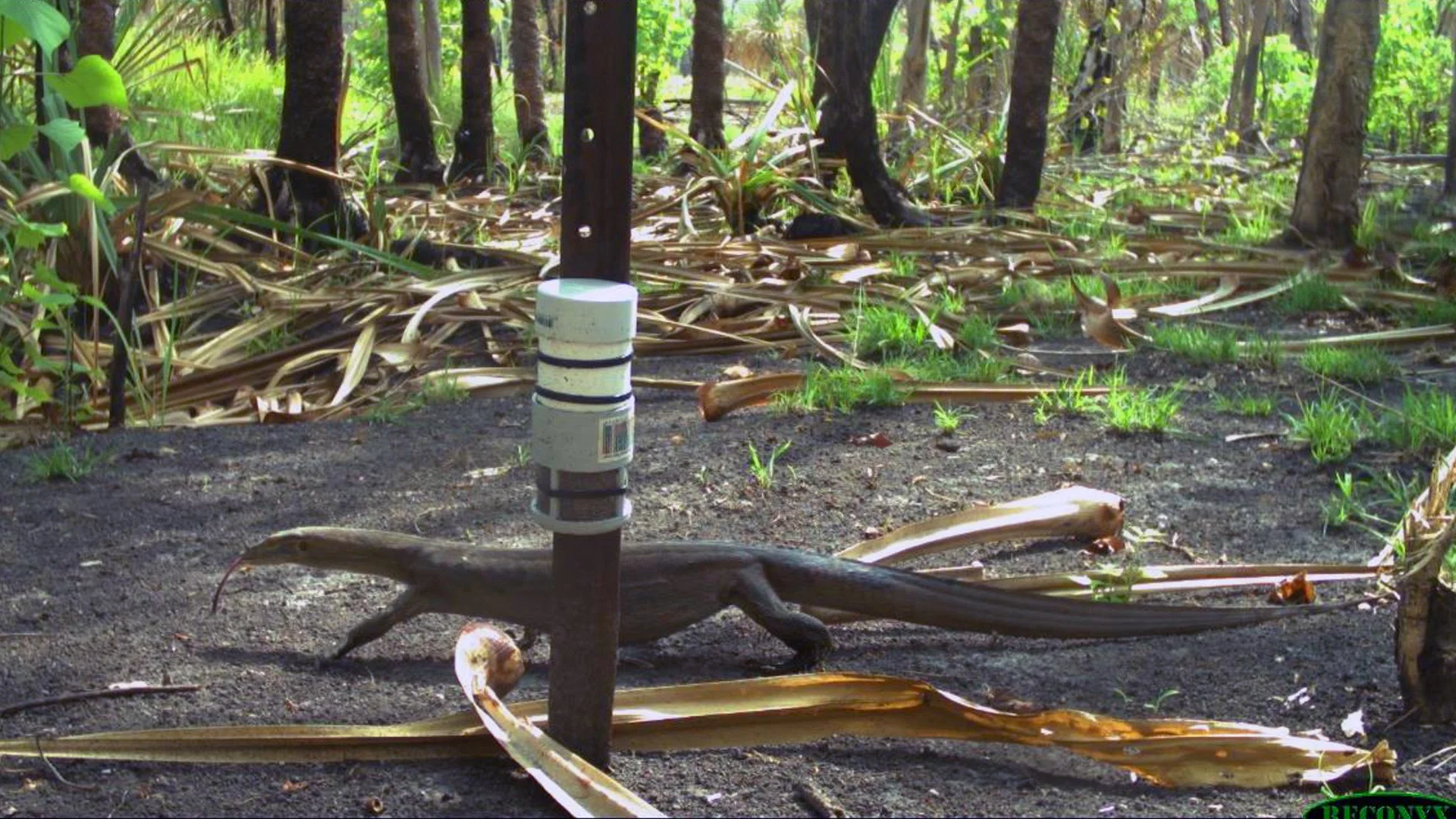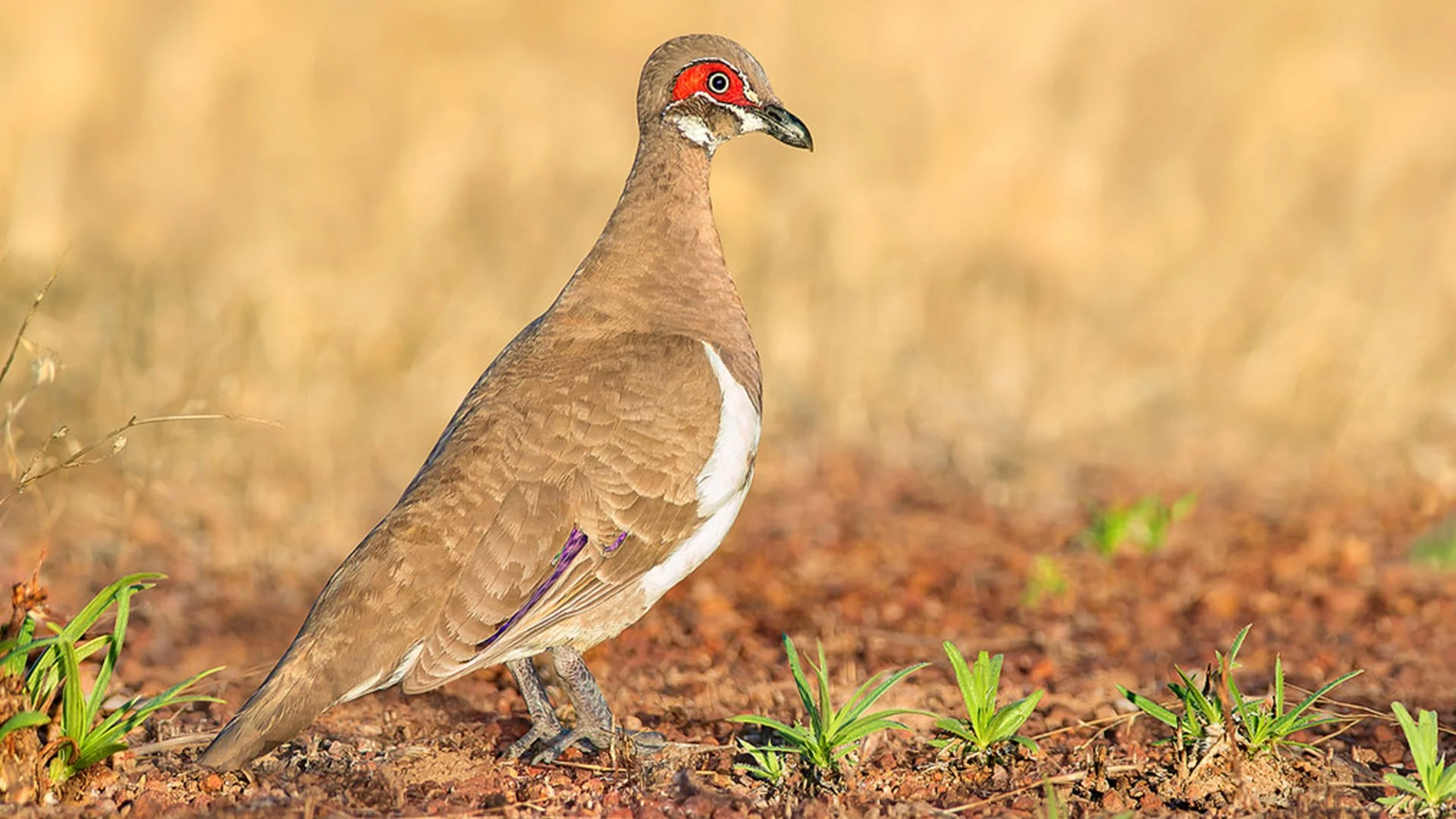
Mimal Management Area
MIMAL MANAGEMENT AREA
In November 2022, Mimal Land Management submitted its Indigenous Protected Area management plan to the Federal Government.
It’s the final step before the government considers Mimal’s proposal to declare an IPA across 18,300 sqare kilometres in south-central Arnhem Land.
The submission comes after a journey to complete consultation and development of the plan amid a global pandemic.
It was developed through in-depth consultation with more than 20 clan groups who collaborated with Indigenous rangers, researchers and scientists to map and prioritise Mimal’s environmental and cultural assets, identify threats and outline ways to manage them.
In October 2019, the Federal government awarded Mimal Land Management more than $320,000 to support community consultation and work toward the management plan.
Mimal landowners and custodians are hopeful they can officially declare their country an IPA in 2023.
What is an IPA?
Indigenous protected areas are a vital part of Australia’s system of national parks and reserves, protecting the nation’s biodiversity for the benefit of all Australians.
They recognise Indigenous rights to manage country while promoting biodiversity and conservation outcomes through the National Reserve System.
It’s land First Nation’s custodians protect and manage through traditional culture and knowledge, and national and international conservation guidelines.
There are more than 81 IPAs across 85 million hectares, more than half of Australia’s national parks and reserves, including some of Australia’s rarest and most fragile environments.
Mimal Management Area
The proposed Mimal Indigenous Protected Area covers 18,300 square kilometres (1.83 million hectares) in the geographic centre of Arnhem Land.
The region is home to the Dalabon, Rembarrnga and Mayili people, who hold an unbroken history of land ownership and management. Their traditional connections to country remain largely intact and many landowners either reside on or spend long periods at outstations. The area is covered with places of significance, including rock art sites, dreaming lines and sacred places linked to spiritual ancestors.
The proposed IPA features a network of large rivers, including the headwaters of the rivers flowing into the Gulf of Carpentaria including the Rose, Phelp, Wilton and Mainoru. The region also features the north flowing rivers, Mann, Blyth and Goyder, along with the headwaters of the Arafura Swamp catchment.
Its biodiverse landscape includes grassy plains (ruwurrno and rorrobo), woodland and forest areas (berrhno and mininyburr), freshwater country (djula and wah) and rock country (badno and ngalwad). Across the area, nine species are listed as threatened, including the Northern Quoll, Gouldian Finch and Leichardt’s Sawfish. Two curlew species are listed nationally as critically endangered, three species are listed as endangered and 12 as vulnerable.The area’s natural and cultural assets are managed by Mimal Rangers on behalf of and in cooperation with landowners and custodians./
Under an established Healthy Country Plan, the rangers manage land, water and fire, and conduct wildlife protection, monitoring and revegetation programs, weed and feral animal control, and carry out rock art, cultural history and language projects, and learning on country education programs with school children.
The proposed IPA includes 1,240 square kilometres (124,000 hectares) which overlaps with existing IPAs including Warddeken, Djelk and South East Arnhem Land IPAs. It also shares a boundary with the Arafura Swamp Rangers Aboriginal Corporation and the Australian Wildlife Conservancy’s Wongalara Sanctuary.
The Mimal IPA would add significantly to national conservation and, in conjunction with neighbouring IPAs and sanctuaries, substantially increase the reservation of the Central Arnhem bioregion and create one of the Northern Territory’s largest Indigenous-owned conservation corridors.
To find out more about our proposal, read the Mimal IPA Prospectus.
Fresh. Life.
The work of Mimal Rangers is out of sight for many, but it delivers vital life services such as clean air and fresh water.
Managing the land and fire, and removing weeds and ferals keeps important plants growing strong so they can produce the very air we breathe.
Controlled burning and fighting wildfires reduces smoke and emissions, helping to ensure the air we breathe is fresh and clean, and reducing the impacts of climate change.
Removing feral animals protects springs and waterways that feed into the rivers that flow into our water supplies. Six months after feral buffalo were fenced out of Weemol Spring, the degraded wetland sprung back to life - the water became clear and clean, and native plants began to regrow over the bare and muddy banks.
Protect. Life.
Mimal Land Management’s ultimate goal is to protect country and culture.
We protect country through land, fire and water management, by managing and removing feral animals and weeds, and through working with our neighbours.
We protect culture by through supporting communities and elders to conduct ceremonies, through our language projects, by recording stories of our elders, by looking after special places and recording rock art.
We believe Indigenous Protected Areas are also vital to protecting country and culture. It’s why we want to declare an IPA over the area we manage.
IPAs have become a important part of Australia’s parks and reserves system over the past 20 years and we support calls for guaranteed IPA funding for another 20 years.
Connect. Life.
Collaborating with our neighbours has always been part of the way we work.
We’ve been working together for millenia, but nowadays we have ‘official paper ways’ of working together, through Indigenous ranger groups.
We joined forces with neighbouring Indigenous ranger groups in west Arnhem Land to create the first-ever controlled savanna burning project that was recognised by the Federal Government and has been adopted across northern Australia - and the world. This work continues with our partners under the organisation ALFA NT.
We work with our neighbours to share knowledge of country - whether its about plants and animals, weeds and ferals and shared cultural sites.
Some of our neighbours manage their land as an IPA. Our neighbour Wardekken established an Indigenous Protected Area a decade ago. We hope to join them and establish an IPA as well.
Declaring our country an IPA will help to further our collaboration and expand the footprint of protected areas in the region.
It will create a connected corridor of parks and reserves that will link Arnhem Land, Kakadu National Park and Nitmiluk National Park - making the largest protected area in Australia.
Water. Life.
Healthy djula and wah - freshwater places - are vital and an important part of our plan in managing country.
Freshwater country is where we get bush foods like fish, turtle, lily roots, mussels and yabbies. Sometimes we find sawfish that come all the way up from the saltwater. It’s where native animals comes to drink - and we find ducks, geese and other animals in big numbers where water is healthy and clean.
Our landowners are working with us on water health issues and activities, and we’re applying a two-toolbox approach to our water management.
We’re undertaking feral animal exclusion around high value places. Feral animals foul the water, damage river banks, cause erosion and take important bush foods.
We’re also developing ranger monitoring capacity and ability to detect water weeds like Water Hyacinth (Eichhornia crassipes) and Cabomba (Cabomba caroliniana). These fast-growing weeds of significance form dense populations quickly, destroying native plants and animals, reducing water quality and restricting flow.
By 2027 we will have a program of two-way monitoring of freshwater country that demonstrates improved habitat for native species, better access for landowners and community members, who will again feel safe spending family time hunting and fishing in freshwater country.
Wild. Life.
We are working to protect native animals and to eradicate ferals from our country.
Four animals listed nationally as threatened species include the Gouldian Finch, (Erythrura gouldiae), Leichhardt’s Sawfish (Pristis pristis), Partridge Pigeon (eastern) (Geophaps smithii smithii) and the Northern Quoll (Dasyurus hallucatus).
Others animals of concern include the Black-footed Tree-rat (Mesembriomys gouldii), Emu (Dromaius novaehollandiae), Mertens’ Water Monitor (Varanus mertensi), Northern Leaf-nosed bat (Hipposideros stenotis), Oenpelli Python (Simalia oenpelliensis).
Feral animals such as buffalo, horses, donkeys, pigs, cattle and cats are a major threat to our country. They cause extensive damage across our freshwater, grassy plains and forest places. They also damage our special cultural sites.
We aim to reduce feral animals’ damaging impact through herd management, monitoring and exclusion zones.
Our native plants are important to us - they offer important habitat and give us food and medicine.
Our plant project works to protect native plant species and involves rangers, elders and landowners who work together to identify native plants, record their uses and language names, to collect seeds and revegetate important conservation areas.
Mimal also works hard to fight the spread of weeds, which are a major threat to the health of our country. Our weed management strategy targets a number of weeds including gamba grass, grader grass and mission grass.
We raise awareness of plants and weeds at the local Gulin Gulin school and community and we’ve also made videos to raise awareness about damaging weeds, like gamba
Fire. Life.
Our successful fire management program reduces greenhouse gas emissions, protects biodiversity, provides jobs for rangers and sparks new life in the landscape.
We were part of the original West Arnhem Land Fire Abatement (WALFA) group who developed the savanna burning methodology where we proved that conducting controlled, early dry season burning reduces wildfires and emissions.
Our work was adopted by the Australian Government and gives individuals and organisations the option to reduce their carbon footprint by purchasing offsets.
Importantly, this approach recognises the long-standing practice of our ancestors, who managed country for millennia through patchwork, cool burning.
We work together with our neighbours and landowners to burn the right way and we are always working to improve our approach.
Strong. Life.
Our country is a living landscape - our culture, heritage, laws and language are linked to the land.
Having cultural knowledge and respect is part of what it means to be a Mimal ranger and we support a range of activities to prepare new generations of custodians and to address our elders’ concerns about loss of knowledge of country and culture.
Our Strong Culture project focuses on increased employment connected to culture, indigenous knowledge of ecology and culture, protection of sacred places and ceremony, rock art recording and conservation, language maintenance, family and oral histories and connections to country, culture camps and walking on country, Junior Rangers and other cultural programs for children and young people.
In recent years we’ve increased opportunities for people to spend time on country, which includes supporting people to live on outstations, growing community engagement in cultural activities, ceremonies and cultural heritage and language work.
Our long term vision is to have strong knowledge, ceremony, language, dance and song connecting families, country and culture.

